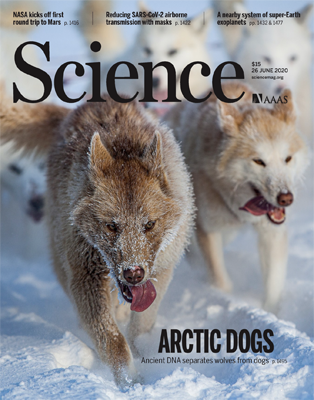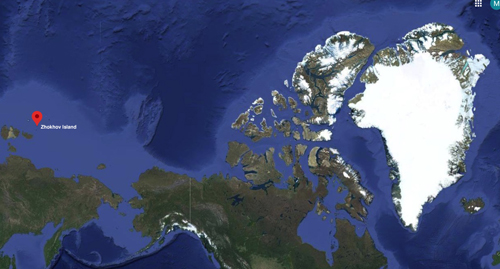In this Post
From the
Editor: The Art of Storytelling
Driving Dogs During the Golden Era of Antarctic Exploration
A Bridge of Ice
Book Review: Burnt Snow
“Arctic-adapted dogs emerged at the Pleistocene-Holocene transition”
QIMMEQ research paper podcast
New payment option: Ken MacRury’s master’s thesis
Driving Dogs During the Golden Era of Antarctic Exploration
A Bridge of Ice
Book Review: Burnt Snow
“Arctic-adapted dogs emerged at the Pleistocene-Holocene transition”
QIMMEQ research paper podcast
New payment option: Ken MacRury’s master’s thesis
Navigating This Site
Index of articles by subject
Index of Journal editions by
volume number
Index of PostScript editions by publication number
Search The Fan Hitch
Articles to download and print
Ordering Ken MacRury's Thesis
Our comprehensive list of resources
Defining the Inuit Dog
Talk to The Fan Hitch
Shop & Support Center
The Fan Hitch home page
Index of articles by subject
Index of Journal editions by
volume number
Index of PostScript editions by publication number
Search The Fan Hitch
Articles to download and print
Ordering Ken MacRury's Thesis
Our comprehensive list of resources
Defining the Inuit Dog
Talk to The Fan Hitch
Shop & Support Center
The Fan Hitch home page
Editor's/Publisher's
Statement
Editor: Sue Hamilton
Webmaster: Mark Hamilton
The Fan Hitch Website and
Publications of the Inuit Sled Dog– the
quarterly Journal (retired
in 2018) and PostScript – are dedicated to the aboriginal
landrace traditional Inuit Sled Dog as well as
related Inuit culture and traditions.
PostScript is
published intermittently as
material becomes available. Online access is
free at: https://thefanhitch.org.
PostScript welcomes your
letters, stories, comments and suggestions.
The editorial staff reserves the right to
edit submissions used for publication.
Contents of The Fan Hitch Website and its publications are protected by international copyright laws. No photo, drawing or text may be reproduced in any form without written consent. Webmasters please note: written consent is necessary before linking this site to yours! Please forward requests to Sue Hamilton, 55 Town Line Rd., Harwinton, Connecticut 06791, USA or mail@thefanhitch.org
Contents of The Fan Hitch Website and its publications are protected by international copyright laws. No photo, drawing or text may be reproduced in any form without written consent. Webmasters please note: written consent is necessary before linking this site to yours! Please forward requests to Sue Hamilton, 55 Town Line Rd., Harwinton, Connecticut 06791, USA or mail@thefanhitch.org

photo by Carsten Egevang
"Arctic-adapted dogs emerged at the Pleistocene–Holocene transition"
Mikkel-Holger S. Sinding et. al., Science 368, 1495–1499, 26 June 2020
by Sue Hamilton
This QIMMEQ Project research appeared in the June 26, 2020 issue of the American Association for the Advancement of Science’s (AAAS) publication, Science Magazine, with supplemental information here. Not more than a day later, hordes of mainstream media jumped all over this news with their own interpretations of the paper’s findings.
I am not ashamed to admit that most scientific research – as originally published – tends to hurt my brain as I don’t fully comprehend it. And in seeking a lay (explained in non-scientific terms) analysis, I tend to summarily reject mainstream media interpretations largely because I strongly suspect their takes are often a version of the myth of the Tower of Babel or perhaps the Hindu fable The Blind Men and the Elephant. My skepticism about such “hit and run journalism” is supported in part by the obvious and disappointing red flags accompanying their text: photographs that adorn the stories. As I had some time on my hands, I decided to track the number of media outlets reporting on this research paper by the number and type of images they used.
Images used by media outlets reporting
on
‘Arctic-adapted dogs emerged at the Pleistocene–Holocene transition’
‘Arctic-adapted dogs emerged at the Pleistocene–Holocene transition’
| Source | Number of photos | Inuit (Greenland) Dog | Non-aboriginal dog | Notes |
|
| 1 |
New York Times | 1 | 1 |
0 |
|
| 2 |
7News.com.au | 4 |
1 |
3 |
|
| 3 |
NBC News |
1 |
0 |
1 |
|
| 4 |
Clicklancashire.com | 1 |
0 |
1 |
|
| 5 |
Nature World News | 1 |
0 |
1 |
|
| 6 |
Science Daily | 1 |
0 |
1 |
|
| 7 |
Myarklamiss.com | 1 |
0 |
1 |
|
| 8 |
Forbes |
3 |
3 |
0 |
Egevang photo* |
| 9 |
National Geographic | 9 |
3 |
6 |
|
| 10 |
Archaeological
Institute of America |
1 |
1 |
0 |
|
| 11 |
AAAS Science Magazine |
1 |
1 |
0 |
Podcast interview with
Sinding |
| 12 |
SciNews | 1 |
0 |
1 |
|
| 13 |
Salon | 1 |
0 |
1 |
|
| 14 |
Trading U | 1 |
1 |
0 |
Egevang photo* |
| 15 |
In Tallaght | 1 |
0 |
1 |
|
| 16 |
Baltimore Sun | 1 |
0 |
1 |
|
| 17 |
Snow Brains | 4 |
1 |
3 |
|
| Totals |
33 |
12 |
21 |
Sigh…I am surprised one of the editors didn’t insert a photo of his exophthalmic Cocker Spaniel posing on a sofa and call it good enough.*Carsten Egevang is the photographer for the QIMMEQ Project and three of his images are part of the file available to use by media outlets for reporting on this research paper.
Sorry folks, I didn’t bother to keep track of the web addresses, but I can say that there was mostly below the tree line stuff: a team of (fat) Siberian Huskies, Iditarod dogs, Alaskan Malamutes, more Siberian Huskies (with blue eyes)…the kind of images “science writers” grab from the usual photo repositories available to journalists seeking a quick and dirty way to entertain their readers, not to educate them with relevancy. To their credit, some of the news releases, such as the one offered by the AAAS, the publisher of record for the original research (their reporting, of course, can be considered credible), used legitimate Inuit Dog images. Also, I did find one review of ‘Arctic-adapted dogs emerged at the Pleistocene–Holocene transition’ which appeared in the June 26, 2020 issue of the not exactly mainstream media The Siberian Times. You should definitely check this one out if only for the fabulous graphics!
There is someone else who shares my cynicism about typical media reporting on scientific studies. The research paper’s lead author Dr. Mikkel Sinding empathized,
“The most frustrating misunderstandings I see on the web related to the study are:Fortunately for all of us Dr. Sinding has graciously provided The Fan Hitch a summary of ‘Arctic-adapted dogs emerged at the Pleistocene–Holocene transition’. So here you have, from the source, a version of the published research for we non-scientist to understand and believe.
1. Modern sled dog breeds are greater than 9500 years old. NO!!! It is the overall branch and genealogy of sled dogs that is that old. The breeds are young.
2. Sled dogs descend from Siberian wolves. NO!!! We detect gene flow from Pleistocene Siberian wolves, and only very little but detectable. Sled dogs have the same origin as all other dogs to the best of our knowledge.
3. As you say, the pictures, they could at least have found appropriate and correct pictures.”
|
Sledge Dogs are Closely
Related to 9,500-Year-Old ‘Ancient Dog’
Sledge dogs are much older and have adapted to Arctic conditions much earlier than previously thought. In a new study from the QIMMEQ project, researchers from the University of Copenhagen, University of Greenland and the Institute of Evolutionary Biology – Barcelona, show that ancestors of modern sledge dogs have worked and lived with humans for over 9,500 years. Dogs play an important role in human life all over the world – whether as a family member or as a working animal. But where the dog comes from and how old various groups of dogs are is still a bit of a mystery. Now, light has been shed on the origin of the sledge dog. In a new study published on the cover of SCIENCE, researchers from the Faculty of Health and Medical Sciences, the University of Copenhagen, show that the sledge dog is both older and has adapted to the Arctic much earlier than thought.  Google Maps “We have extracted DNA from a 9,500-year-old dog from the Siberian island of Zhokhov, which the dog is named after. Based on that DNA we have sequenced the oldest complete dog genome to date, and the results show an extremely early diversification of dogs into types as sledge dogs,” says first author of the study, Mikkel Sinding, the Globe Institute. Until now, it has been the common belief that the 9,500-year-old Siberian dog, Zhokhov, was a kind of ancient dog – one of the earliest domesticated dogs and a version of the common origin of all dogs. But according to the new study, modern sledge dogs such as the Siberian Husky, the Alaskan Malamute and the Greenland sledge dog share the major part of their genome with Zhokhov. “This means that modern sledge dogs and Zhokhov had the same common origin in Siberia more than 9,500 years ago. Until now, we have thought that sledge dogs were only 2 to 3,000 years old,” says Mikkel Sinding. The Original Sledge Dog To learn more about the origins of the sledge dog, researchers have further sequenced genomes of a 33,000-year-old Siberian wolf and ten modern Greenlandic sledge dogs. They have compared these genomes to genomes of dogs and wolves from around the world. “We can see that the modern sledge dogs have most of their genomes in common with Zhokhov. So, they are more closely related to this ancient dog than to other dogs and wolves. But not just that – we can see traces of crossbreeding with wolves such as the 33,000-year-old Siberian wolf – but not with modern wolves. It further emphasises that the origin of the modern sledge dog goes back much further than we had thought,” says Mikkel Sinding. The modern sledge dogs have more genetic overlap with other modern dog breeds than Zhokhov has, but the studies do not show us where or when this occurred. Nevertheless, among modern sledge dogs, the Greenland sledge dogs stands out and has the least overlap with other dogs, meaning that the Greenland sledge dog is probably the most original sledge dog in the world. Common Features of Inuit and Polar Bears In addition to advancing the common understanding of the origin of sledge dogs, the new study also teaches the researchers more about the differences between sledge dogs and other dogs. Sledge dogs do not have the same genetic adaptations to a sugar and starch rich diet that other dogs have. On the other hand, they have adaptations to high-fat diets, with mechanisms that are similar to those described for polar bears and Arctic people. “This emphasises that sledge dogs and Arctic people have worked and adapted together for more than 9,500 years. We can also see that they have adaptations that are probably linked to improved oxygen uptake, which makes sense in relation to sledding and give the sledding tradition ancient roots,’” says Mikkel Sinding. The study ‘Arctic-Adapted Dogs Emerged at the Pleistocene-Holocene Transition’ has been published in SCIENCE. |
In a separate entry in this issue of PostScript you will find the transcript of a podcast interview with Dr Sinding discussing ‘Arctic-adapted dogs emerged at the Pleistocene–Holocene transition’.